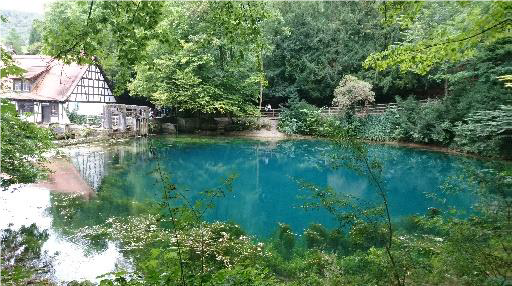
Analysis of the discharge data of the Blautopf in Blaubeuren
- Contact:
Prof. Dr. Nico Goldscheider
Dr. Nadine Göppert
M.Sc. Yanina Müller - Startdate:
according to agreement
The aim of the bachelor thesis is to quantify the amount of the blue pot in Blaubeuren as comprehensively as possible. The results of the bachelor thesis are the basis for more detailed discharge investigations, which are, among other things, a prerequisite for the evaluation of several marking experiments in the overall system of Blauhöhle, Hessenhauhöhle and Blautopf.
Within the scope of the bachelor thesis two methods of bulk measurement are applied:
- Determination via the salt passage curve with the salt dilution method
- and the determination via the velocity profile using an acoustic flow meter (Ott ADC).
In addition, pressure probes are to be installed, read out and evaluated at suitable points on the Blautopf in order to determine a water level-discharge relationship which, in the best case, covers different hydrological conditions from low to high water.
The data obtained in the bachelor thesis will be compared with the data of the LUBW, which has already realised a continuous flow measurement at the Blautopf. However, this shows partly unrealistic and strongly fluctuating measured values at low and high discharges. A suitable presentation of the data and a critical analysis of the time series collected so far as well as an in-depth discussion about the plausibility of the data should lead to an assessment of the discharges at the Blautopf.
Another focus of the bachelor thesis is the estimation of a possible infiltration of water from the karst aquifer or the blue into the adjacent pore aquifer. This will be investigated by water level measurements at selected groundwater monitoring sites.
The evaluation of the data should then be carried out with suitable software (e.g. Excel, Origin, etc.).
The main tasks include:
- Bulk measurements using salt dilution method and acoustic flow meter (Ott ADC)
- Continuous water level measurement with pressure probes
- Calculation of the water level-discharge relationship
- Comparison of own data and existing time series
- Critical analysis and discussion of the plausibility of existing time series
- (if possible) estimation of infiltration into the surrounding pore aquifer
